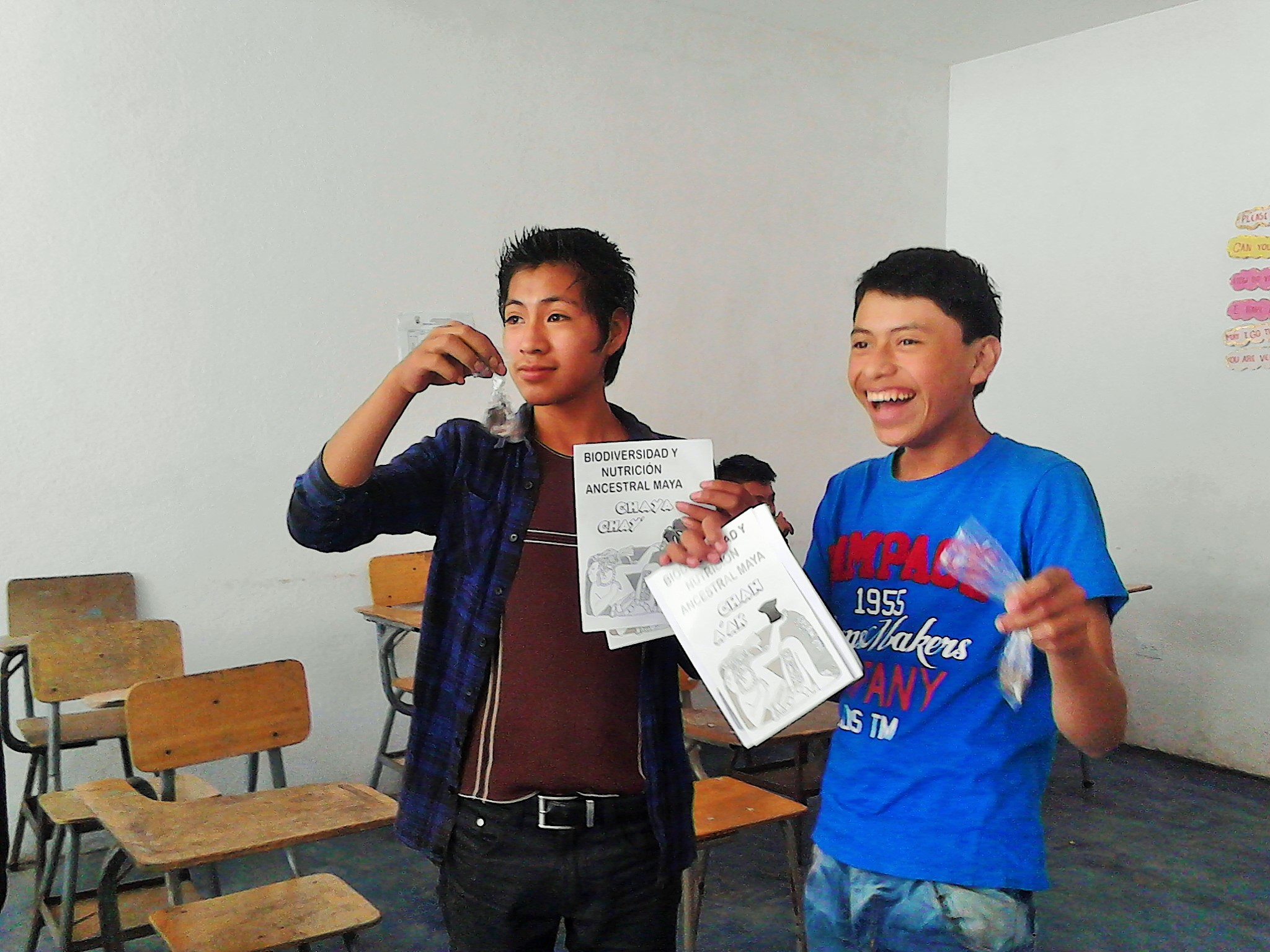
There is a lot of talk about recycling, about how to use all these plastic bottles, bags and other packaging materials to create something useful or even artistic, giving a value to all the unnecessary packaging, and sometimes with good intention, promoting the consumption of processed food, drinks, personal care products, etc. However, this over-consumption of packaged foods is unsustainable and it is affecting deeply rural communities and society.
In JUSTA, we believe education and proper information are essential to fight against the consumption of junk food and promote healthy eating between young people. This was the issue addressed in a workshop with the students of the Chacaya Secondary Institute. The goal, to let them understand all the negative impacts of the consumption of junk food. For facilitating the activity, we counted on Susana Heisse from Pura Vida, ecological movement that promotes responsible consumption. We discussed the negative effects on their health, the local economy, the planet, and finally on their identity. We talked about the unhealthy ingredients added to junk food, about the money that goes out of Chacaya due to consumption of these and we also calculated the quantity of garbage produced by the packages. 
Maya people are known for being “Hombres de Maiz” (the people of corn); this plant has been the base of our food and it´s been considered sacred for millenniums. In the Popol Vuh, the book of Maya Quiché people´s history, it is described how the creator made the people out of corn, after previous trials with wood and mud, which resulted in soulless people and in people that could not stand on their feet. When Maya people plant the Milpa (crop growing system which produces corn, beans and squash), it’s an offering to the Gods – an activity central to spiritual belief. There are four colors of corn seeds representing the four colors of humans, and each variety of corn grows well in the area where it has been sown for centuries. The big multinational companies, as Monsanto, have altered the essence of this sacred plant, adding transgenic elements, finally conceived to monopolize the seeds of our food. The use of transgenic seeds causes contamination of the native seeds, developed through thousands of years of culture. Finally this modified corn is sold in the communities in the form of corn flour and packaged fried snacks, which pretend to substitute the corn mass obtained from local corn ground in the nixtamal (traditional corn Molino). The overabundance of these junk foods and the lack of access to healthier food have increased these communities vulnerability to food related death and disease. 1
There is a strong invasion of processed food in poor communities, the companies have inundated and taken over traditional food channels, with the direct support of governments through the approval of free trade and investment agreements. Like in many rural communities of Guatemala, people in Chacaya don´t have a market to buy vegetables or fruit, but they do have plenty of packaged snacks in the couple of stores that you can find there. They also have many brands of sodas and energetic drinks, even when sometimes they lack safe drinking water. You can see the packages contaminating the town everywhere. The companies find their way to enter to these remote communities but don´t care at all about the garbage left there. Many people in Chacaya don’t speak Spanish but Tzutuj´il language, they cannot understand the ingredients written in the labels, then they don´t know at all what they are putting into their mouth and they are spending their limited resources in buying these products.
We began our responsible consumption workshop playing the game of the store. Some of the students played the role of sellers in a market, and the others played the buyers. Each seller had to convince the buyers of the qualities of his product, with the idea of making contrast between nutritional value and cost. Many students were surprised by the high quantity of sugar contained in the sodas and all the fat and additives contained in fried snacks.


Under the slogan “A better nutrition, less contamination, strong local market”, Susana led the students through some of the historical facts about ancestral Maya nutrition and how “chan”, one of the four basic grains (corn, beans, amaranth and chia) was forbidden during the conquest of América. We took samples of chia and some lemons for the students to take home, the task was to prepare and enjoy a healthy lemonade with chia.
Another star of the day was the “chaya”, used by the ancient Maya people as a dietary staple for centuries, because of its amazing nutritional qualities which gave people the strength they needed for their often harsh work and physically demanding lives. They also recognized chaya as having many medicinal qualities to keep the mind and body strong and healthy. Despite the superfood qualities of this plant, the use of chaya has become largely forgotten and only few people grow and harvest it. For ending the activity, we took many cuttings of chaya and planted them in a corner of the school. We planted aloe vera together with it, to remember also the affordable medicine that can grow in our garden.

JUSTA raises funds for paying the education of students in Chacayá whose families cannot sustain their education. We organize workshops to stimulate these students’ abilities, to open their minds and hopefully to help them make better decisions for their health, their community and the planet.
1. Oppression through Poor Nutrition, Andrea Freeman, Berkeley University

